Stem cell exosome
Hair Restoration
No surgery, no downtime—just a safe, effective way to restore confidence and achieve healthier, fuller-looking hair.
Introducing DistrictCryo's Advanced Hair Restoration
Hair Restoration is a non-invasive treatment designed to stimulate natural hair growth and improve hair density. It’s ideal for thinning areas or hair loss that hasn’t responded to other methods.
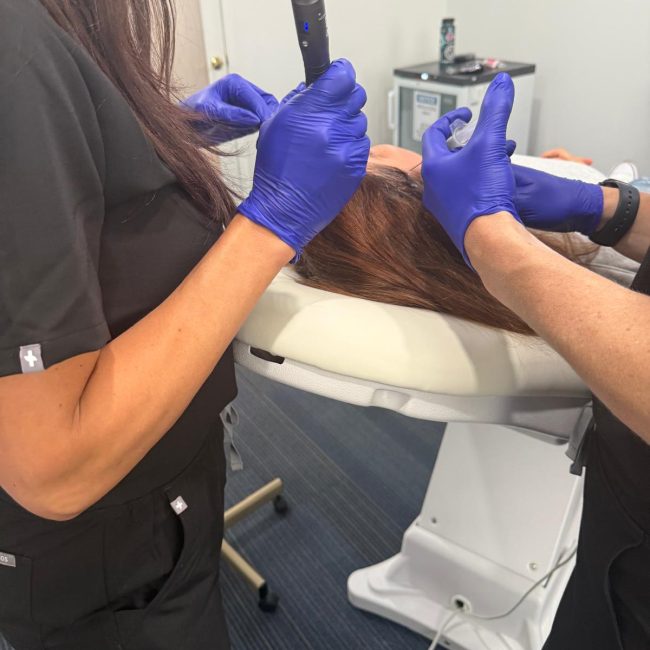

The Unspoken Struggle: Understanding Hair Loss and Reclaiming Your Confidence
It’s a quiet, personal moment that millions experience but few talk about: the startling sight of more hair in the sink, on the brush, or on the pillow than on your head. That sinking feeling in your stomach can become a daily source of anxiety. If you’re tired of this experience, know this: you’re not alone.
Hair loss, medically known as alopecia, is a widespread condition affecting millions of men and women of all ages across the globe. For many, it’s more than just a physical change; it’s a frustrating and deeply personal journey that can chip away at self-esteem and alter the way you see yourself in the mirror. But what if you could turn back the clock on hair loss and regain control?
Why Does Hair Loss Happen?
Understanding the root cause of your hair loss is the first step toward finding an effective solution. While genetics play a leading role, several other factors can contribute to thinning hair:
Androgenetic Alopecia: This is the most common cause, often referred to as male-pattern or female-pattern baldness. It’s a hereditary condition where hair follicles shrink over time, eventually ceasing to produce hair. In men, it often starts with a receding hairline or a thinning crown, while women typically notice a widening part or diffuse thinning across the scalp.
Hormonal Changes: Life events such as pregnancy, childbirth, and menopause can trigger temporary or permanent hair loss due to fluctuating hormone levels. Conditions like Polycystic Ovary Syndrome (PCOS) and thyroid disorders are also common culprits.
Medical Conditions and Stress: Significant life stressors, whether physical (like surgery or a serious illness) or emotional, can lead to a condition called telogen effluvium, where hair is prematurely pushed into its shedding phase. Autoimmune diseases, scalp infections, and nutritional deficiencies can also be contributing factors.
Lifestyle and Environment: What you eat and how you live can impact your hair’s health. Poor nutrition, particularly a lack of iron, protein, and essential vitamins, can weaken hair. Similarly, harsh chemical treatments and tight hairstyles that pull on the scalp can cause damage and lead to traction alopecia.
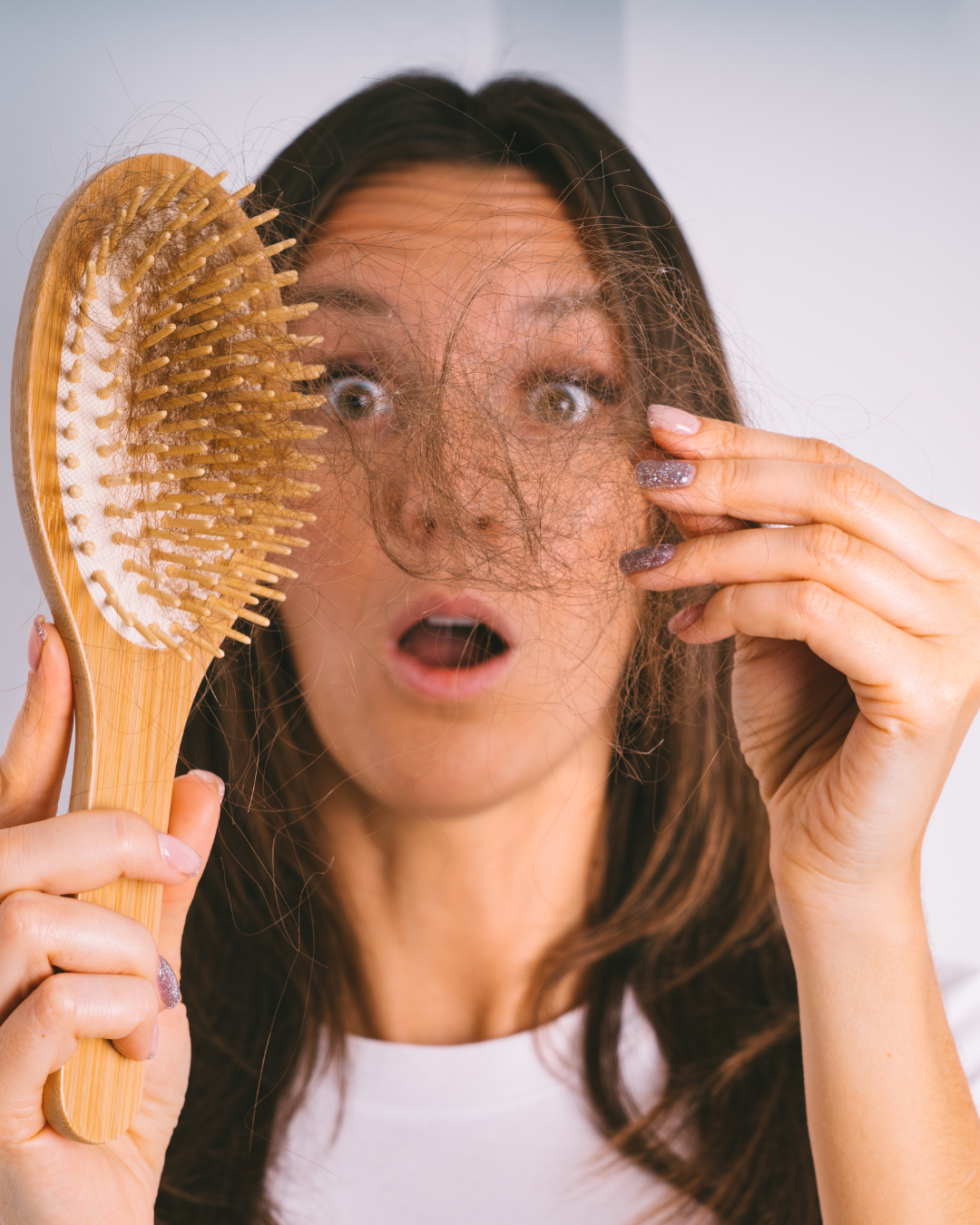
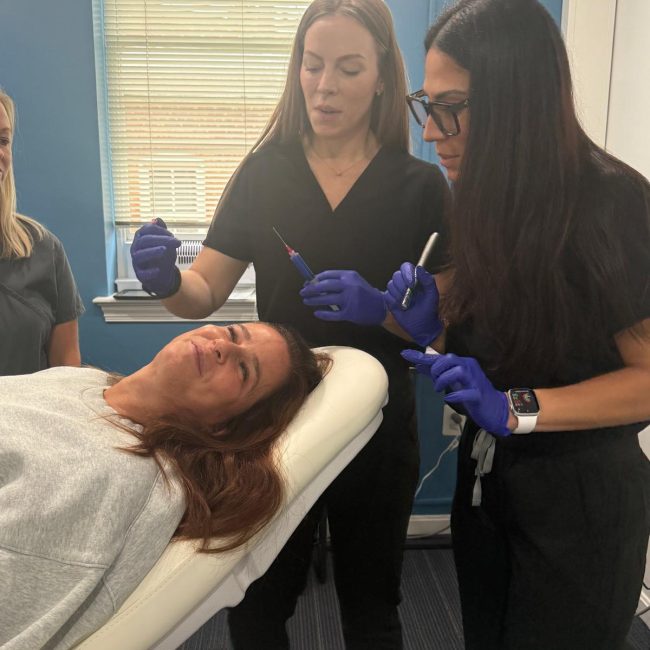
DistrictCryo's Advanced Hair Restoration
We offer a suite of advanced, minimally invasive hair restoration solutions tailored to your unique needs. Our treatments are designed to:
Stimulate Natural Hair Growth: We use cutting-edge technology to reactivate dormant hair follicles.
Increase Hair Density and Thickness: Achieve a fuller, healthier head of hair.
Deliver Long-Lasting, Natural-Looking Results: Our expert team ensures your results are seamless and undetectable
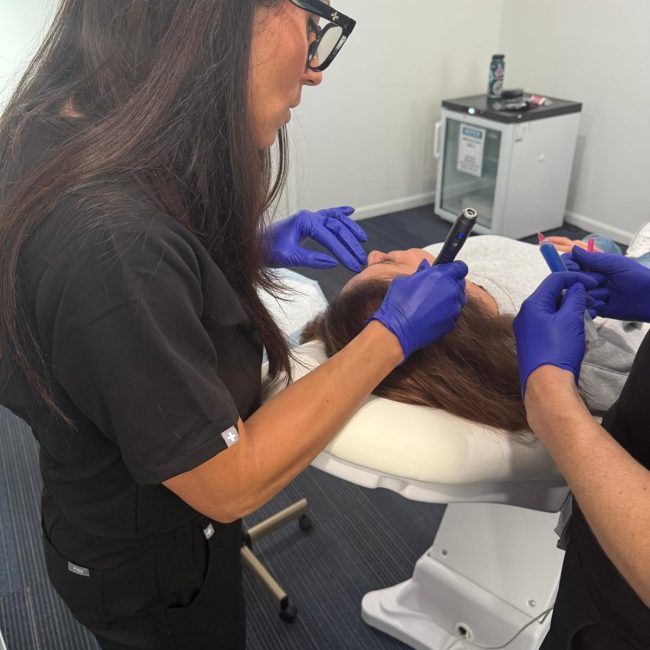
How Do Exosomes Work for Hair Restoration? A 3-Step Process
When injected into the scalp, exosomes initiate a powerful regenerative response. The process is straightforward but profound:
Signaling and Activation: Exosomes deliver their payload of growth factors and genetic material directly to the base of the hair follicles. This signals dormant follicles to shift from the resting (telogen) phase to the active growth (anagen) phase.
Reducing Inflammation & Improving Circulation: They help calm inflammation around the follicle, creating a healthier environment for hair to grow. They also promote the formation of new blood vessels (angiogenesis), increasing the delivery of oxygen and nutrients to the scalp.
Prolonging the Growth Cycle: By reactivating follicles and improving scalp health, exosomes help extend the anagen phase, leading to hair that grows longer, thicker, and stronger over time.
Stem Cell Exosomes for Hair Restoration
For years, those experiencing hair loss have searched for a solution that is both effective and minimally invasive. While options like PRP have shown promise, the field of regenerative medicine has taken a revolutionary leap forward. As of 2025, the most advanced and talked-about treatment is Exosome Therapy for Hair Restoration.
If you’re looking for a next-generation solution to thinning hair, this guide will explain what exosomes are, how they work, and why they are quickly becoming the new gold standard in non-surgical hair restoration.
What Are Exosomes? The Powerhouse of Cellular Regeneration
Exosomes are not cells themselves. Instead, think of them as microscopic messengers, or vesicles, that are released by cells, particularly mesenchymal stem cells. These powerful vesicles are loaded with critical bioactive molecules, including:
Growth Factors: Proteins that signal cells to heal, grow, and regenerate.
mRNA and microRNA: Genetic information that can instruct dormant hair follicles to “wake up” and re-enter the growth phase.
Cytokines: Proteins that help control inflammation, a key contributor to some types of hair loss.
Essentially, exosomes are the pure, concentrated signaling portion of stem cell therapy, delivered directly to where they are needed most.
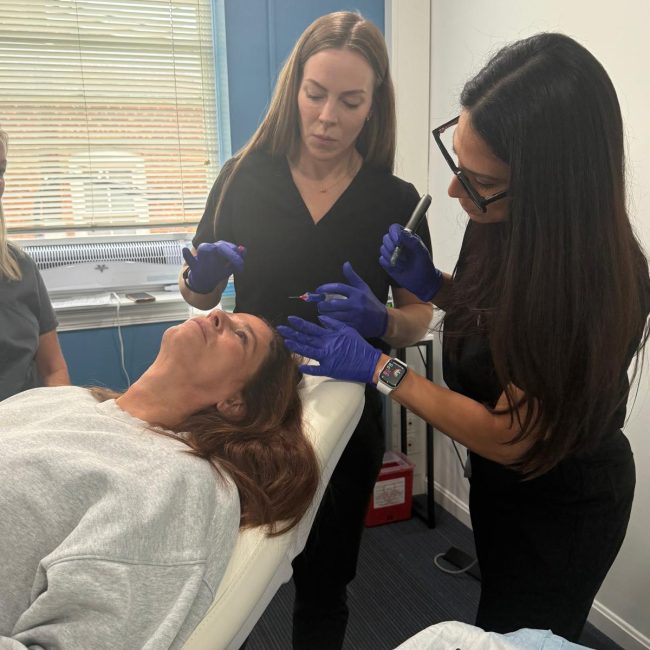
Who Is an Ideal Candidate for Exosome Hair Therapy?
You may be an excellent candidate for exosome therapy if you:
Are in the early to moderate stages of androgenetic alopecia (male or female-pattern baldness).
Have thinning hair but still have active, albeit dormant, hair follicles.
Are looking for a non-surgical alternative to a hair transplant.
Want to enhance the results of a recent FUE or FUT hair transplant.
Are seeking a more potent alternative to PRP therapy.
The Key Benefits of Exosome Therapy for Hair
Why is there so much excitement around exosome therapy in 2025? Here are the primary advantages:
Higher Concentration of Growth Factors: Lab-purified exosomes contain a much higher and more consistent concentration of growth factors compared to a patient’s own PRP, potentially leading to more robust results.
Non-Surgical & Minimally Invasive: The treatment involves a series of small injections into the scalp with no incisions, stitches, or significant downtime.
No Blood Draw Required: Unlike PRP, exosome therapy uses a carefully sourced and purified biological product, so there is no need to draw your blood.
Reduces Scalp Inflammation: Its powerful anti-inflammatory properties make it effective for hair loss associated with inflammatory scalp conditions.
Quick & Convenient Procedure: A typical session can be completed in under an hour, allowing patients to return to their daily activities almost immediately.
FAQ
What are the most common causes of hair loss?
The most common cause is androgenetic alopecia, also known as male or female-pattern baldness, which is primarily genetic. Other significant causes include hormonal changes (due to pregnancy, menopause, or thyroid issues), medical conditions, significant stress (telogen effluvium), nutritional deficiencies, and damage from hairstyling practices (traction alopecia).
Is hair loss preventable?
While genetic hair loss cannot be entirely prevented, its progression can often be slowed down. Maintaining a healthy lifestyle, eating a balanced diet rich in vitamins and minerals (especially iron, zinc, and biotin), managing stress, and avoiding harsh chemical treatments can support overall hair health. Early intervention with medically-approved treatments can also be highly effective.
When should I see a specialist for my hair loss?
You should consider seeing a specialist (a dermatologist or hair restoration expert) if you notice sudden or patchy hair loss, a rapidly receding hairline, excessive shedding, or if your hair loss is causing you significant distress. An expert can diagnose the underlying cause and recommend the most appropriate treatment plan.
Are there non-surgical hair restoration options?
Yes, several effective non-surgical treatments are available:
Minoxidil (Rogaine®): A topical solution or foam applied directly to the scalp to stimulate hair growth.
Finasteride (Propecia®): An oral prescription medication for men that blocks the hormone responsible for male-pattern baldness.
Platelet-Rich Plasma (PRP) Therapy: This involves drawing your own blood, processing it to concentrate the growth-factor-rich platelets, and injecting the PRP into the scalp to stimulate dormant follicles.
Low-Level Laser Therapy (LLLT): This uses red light therapy through caps or combs to stimulate follicular activity and promote hair growth.
Is a hair transplant procedure painful?
The procedure itself is performed under local anesthesia, so you will not feel any pain in the scalp area during the transplant. Patients typically report mild discomfort or a feeling of pressure. Any soreness in the days following the procedure can usually be managed with standard pain medication.
What is the recovery process like?
Recovery is relatively quick. Most patients can return to non-strenuous work within a few days. You will need to be gentle with your scalp for the first week, following specific washing instructions provided by your doctor. Small scabs will form on the transplanted grafts and will fall off naturally in about 7-14 days. Strenuous exercise should be avoided for at least two weeks.
When will I see the final results?
Hair restoration is a process that requires patience. After a transplant, the newly implanted hairs will typically shed within 2-4 weeks—this is normal. New, permanent hair will begin to grow in their place around 3-4 months post-procedure. You will see noticeable improvement by 6-9 months, with final results and full density visible at the 12 to 18-month mark.
Is exosome therapy for hair loss safe?
Yes. The exosomes used for therapeutic purposes are sourced from reputable labs where they are rigorously screened, purified, and sterilized to ensure safety and quality, free from any contaminants or cellular debris.
How many treatment sessions will I need?
One of the most significant advantages of exosomes is their potency. Many patients achieve significant, long-lasting results after just one session. However, your specialist may recommend a follow-up treatment after 12-24 months to maintain results, depending on the progression of your hair loss.
Is the procedure painful?
The scalp is numbed with a local anesthetic before the injections, so discomfort during the procedure is minimal. Patients typically report a feeling of slight pressure.
When will I see results?
Initial results, such as reduced shedding, can be noticed within 2-3 months. More significant improvements in hair thickness and density typically become visible from 6 months onwards, with final results appearing at the 12-month mark.
Ready to Explore the Future of Hair Restoration?
Exosome therapy represents the pinnacle of regenerative medicine for hair loss in 2025. By offering a potent, minimally invasive, and highly effective solution, it provides new hope for those looking to reclaim a fuller, healthier head of hair.
Are you ready to see if exosome therapy is the right solution for you? Contact a hair restoration specialist in your area to schedule a personalized consultation today.
Reviews
Don’t just take our word for it
